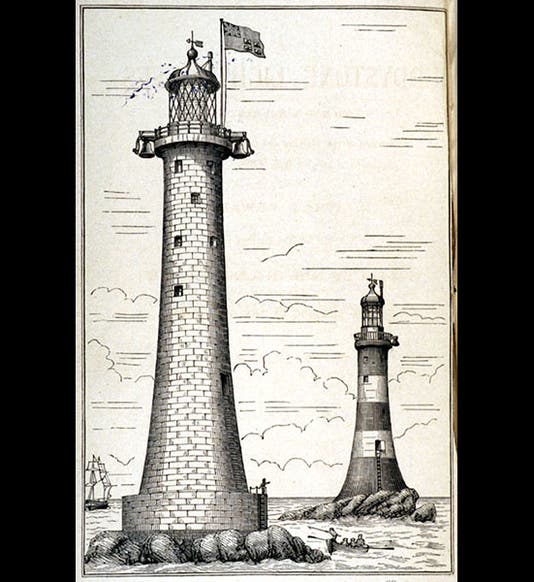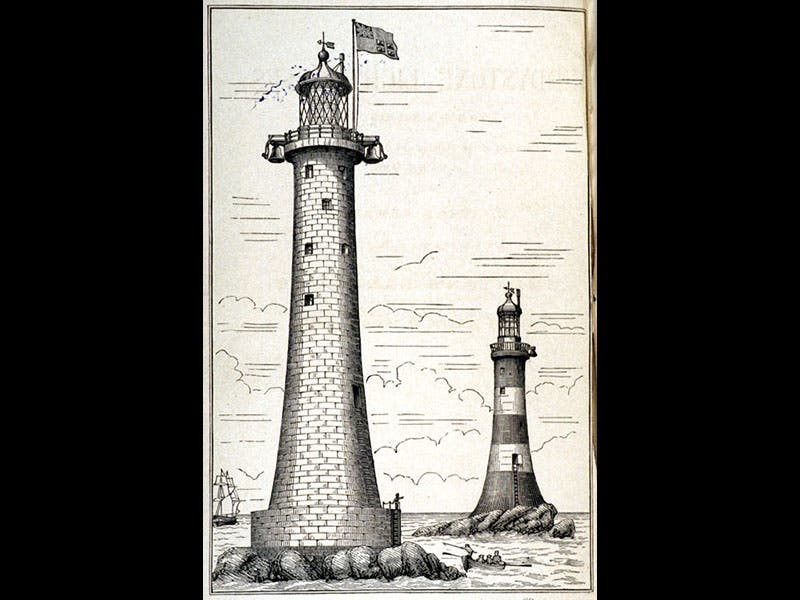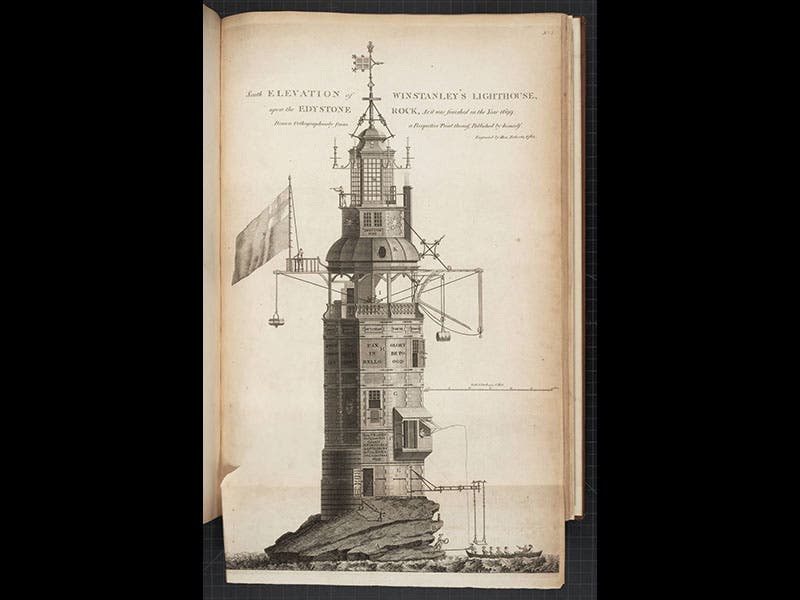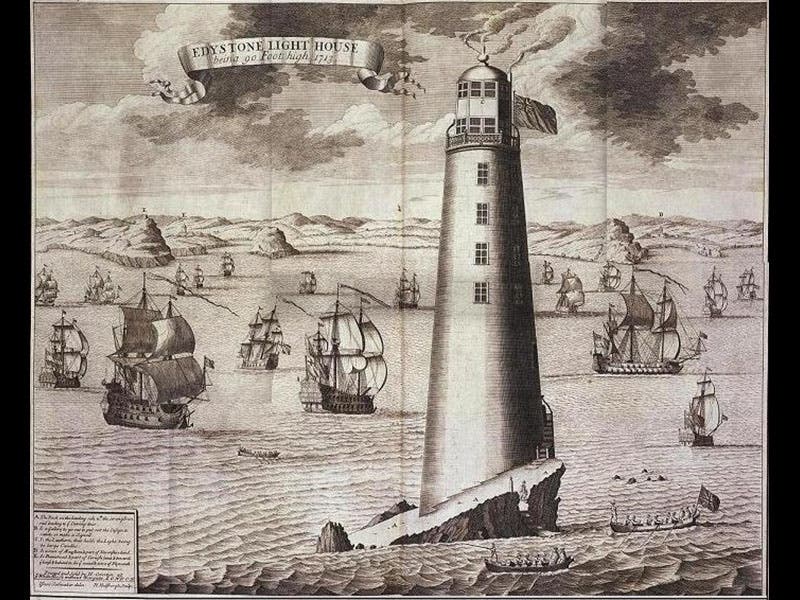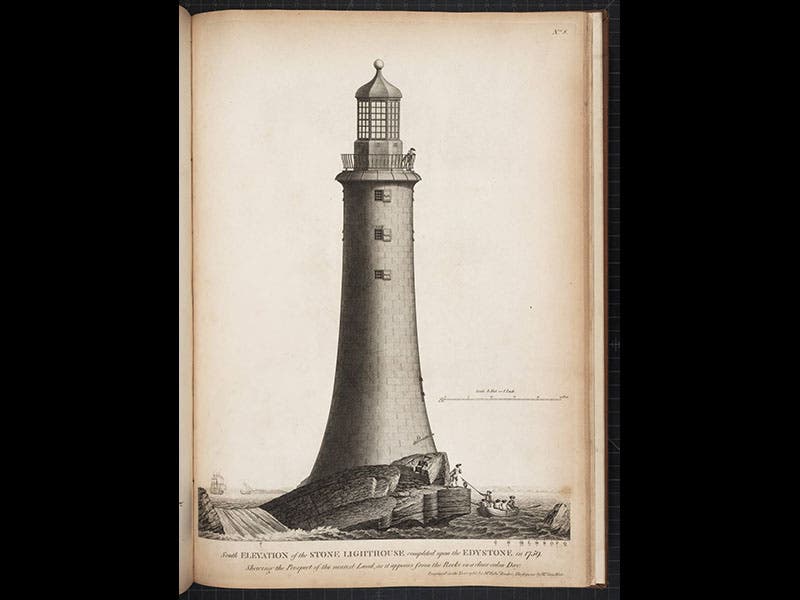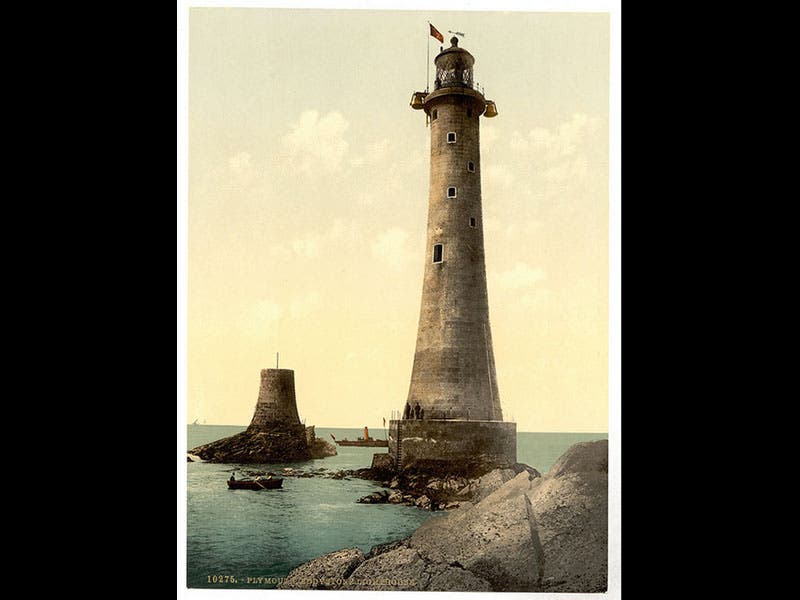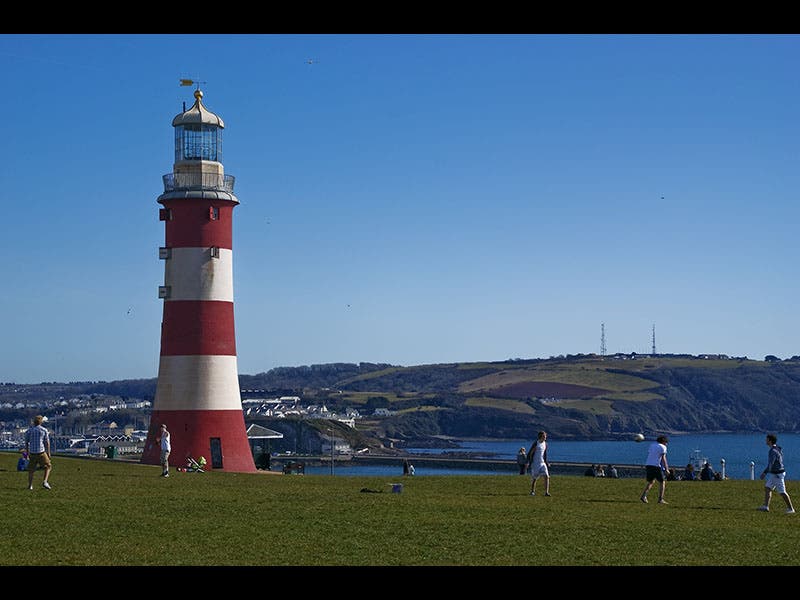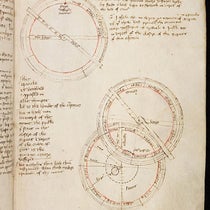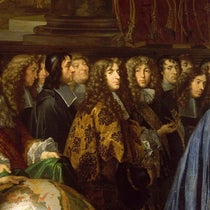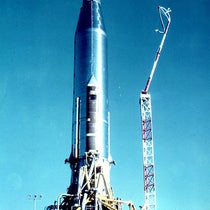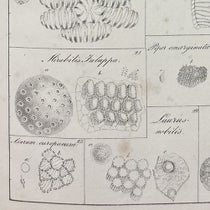Scientist of the Day - James Douglass
James Nicholas Douglass, an English civil engineer, was born Oct. 16, 1826. Douglass is remembered (or not remembered) as the man who designed and built the "other" Eddystone Lighthouse. The previous and more famous Eddystone light had been engineered by John Smeaton and completed in 1759. This was a big deal, because two previous lighthouses on the same site had been burned or battered into oblivion by the stormy seas in the channel near Plymouth. Smeaton's lighthouse was indeed a beauty, with carefully interlocked stones that could withstand the worst that nature had to offer. However, after 120 years of buffeting by the sea, the rock beneath Smeaton's lighthouse had started to erode away, and it was necessary to build a new structure on a nearby formation of rocks. Douglass was awarded the commission. The new Eddystone light was twice as tall as Smeaton's and much more massive. For a while the two stood there, side by side, but then the top of the old lighthouse was removed and re-erected at Plymouth harbor as a monument. We featured both lighthouses in our Centuries of Civil Engineering exhibition in 2002.
The images above show, in order: the two Eddystone lighthouses of Douglass and Smeaton in 1882, with Douglass’ in the foreground; the first (Winstanley) lighthouse of 1699, which was washed away in 1703; the second (Rudyerd) lighthouse of 1708, which burned down in 1755; the third and most famous Eddystone light, erected by Smeaton in 1759; the fourth lighthouse, that of Douglass, with the stub of Smeaton’s in the background, from a photo of 1905. The last image is a modern photo of the top of Smeaton’s lighthouse, now transported to a green in Plymouth.
Dr. William B. Ashworth, Jr., Consultant for the History of Science, Linda Hall Library and Associate Professor, Department of History, University of Missouri-Kansas City. Comments or corrections are welcome; please direct to ashworthw@umkc.edu.

